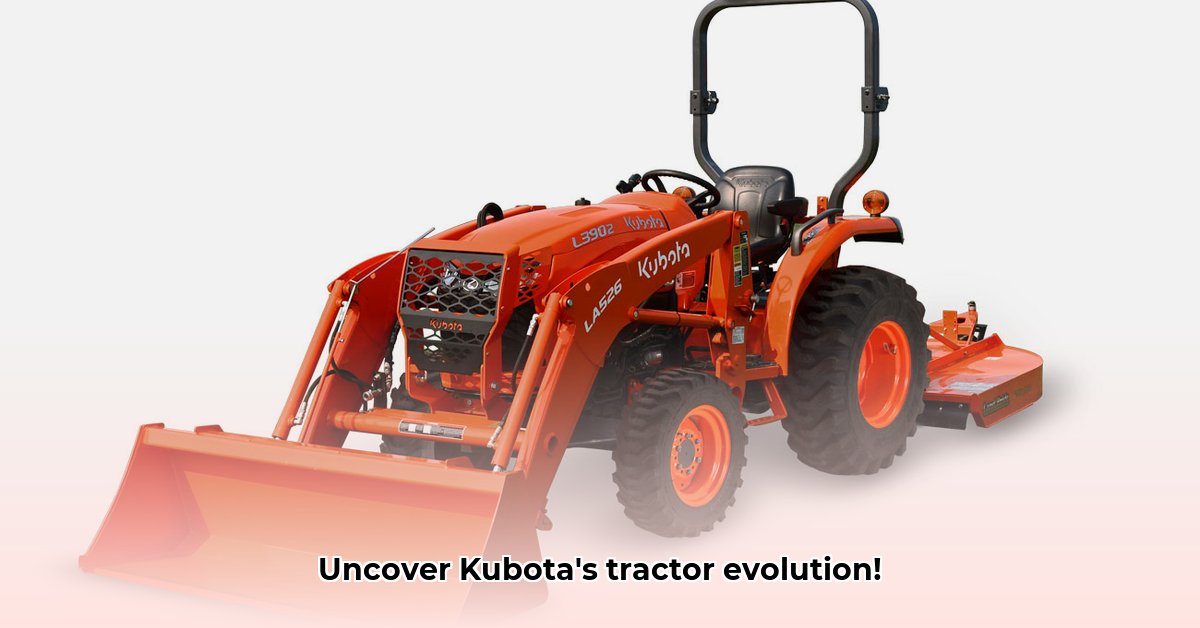
The Early Years: Establishing a Legacy (1960s-1970s)
Kubota's foray into tractor manufacturing began in the post-war era, responding to the needs of a burgeoning Japanese agricultural landscape. Characterized by smaller farms and a demand for compact, reliable machinery, Kubota's initial models were designed for maneuverability and durability. These early tractors, often boasting horsepower in the teens (e.g., the L13G with its 13 horsepower engine), were built to last. While less powerful than their later counterparts, they provided farmers with a critical tool, establishing Kubota's reputation for quality engineering. Was this a risky move given the limited horsepower? Considering the success that followed, it clearly paid off. For more details on Kubota's BX series, check out this page.
Expansion and Diversification (1980s-1990s)
The 1980s and 90s witnessed a dramatic shift. Kubota expanded its product line significantly, introducing tractors with substantially higher horsepower ratings. Models like the A-15 (approximately 15.3 horsepower) showcased this evolution towards greater power and versatility, catering to the needs of larger farms and more diverse agricultural operations. This expansion mirrored Kubota's growing global reach, adapting its offerings to meet varied farming practices worldwide. The increased horsepower wasn't just about bigger engines; it was about enhanced capabilities to manage larger acreages and handle wider ranges of tasks. This era saw Kubota solidify its reputation as a significant player in the global agricultural market.
The Modern Era: Technology and Sustainability (2000s-Present)
The 21st century marked a significant turning point. Kubota aggressively embraced technological advancements, focusing on fuel efficiency to meet stricter environmental regulations. Emissions control systems became a priority. Beyond simple power increases, the focus shifted towards "smart farming." This involved automation to enhance precision, reduce labor, and increase efficiency. Kubota's commitment to sustainable practices became a key differentiator. How did they manage this complex integration of technology and sustainability? Through diligent engineering and a keen understanding of evolving market needs. This era showcases tractors with significantly higher horsepower (50+ hp and beyond in the M Series, for example), along with advanced features like electronic fuel injection and automated systems.
Key Models and Trends: A Summary
The following table provides a concise overview of significant model developments across the decades:
| Decade | Model Example(s) | Approximate Horsepower Range | Key Features |
|---|---|---|---|
| 1960s-70s | L13G | Under 20 hp | Compact, reliable, simple design |
| 1980s-90s | A-15 | 15-50 hp | Increased power, improved versatility |
| 2000s-Present | M Series | 50+ hp | High efficiency, emission controls, automation |
This overview highlights the clear trajectory of Kubota's tractor development: from compact, reliable machines to powerful, technologically advanced implements capable of meeting the demands of modern, sustainable agriculture.
The Future of Kubota Tractors: Innovation on the Horizon
Kubota's future likely involves further advancements in automation, precision agriculture technologies, and enhanced fuel efficiency. While specific predictions remain speculative, Kubota's history suggests a continued commitment to innovation and sustainability. We can anticipate even "smarter" machines, capable of optimizing performance based on real-time data and farmer input. The trajectory points towards tractors that are not only powerful and efficient but also highly integrated into sophisticated farming management systems. This next phase is poised to be as transformative as the journey already undertaken.